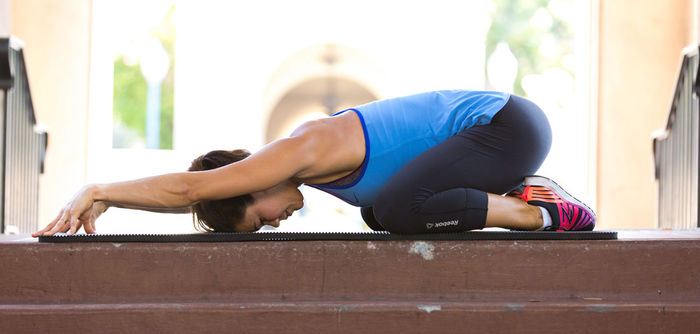Is it time to mix up your clients’ programs? Partner exercises are a great way to add fun and interest to traditional exercises, while also creating a more stimulating environment. Here are some additional benefits:
- Increased socialization and team moral
- Enhanced confidence, trust and trainer-client relationship
- Stimulation for the mind
- Reduced boredom
- Improved program design
These partner exercises can be used in both your individual and group-training programs. The chosen exercises are higher intensity, which means the caloric expenditure is higher. You can, however, progress and regress the exercises as needed. Exercises can be performed on a rep or time basis, depending on the client’s protocol or program.
Resistance Band See-Saws
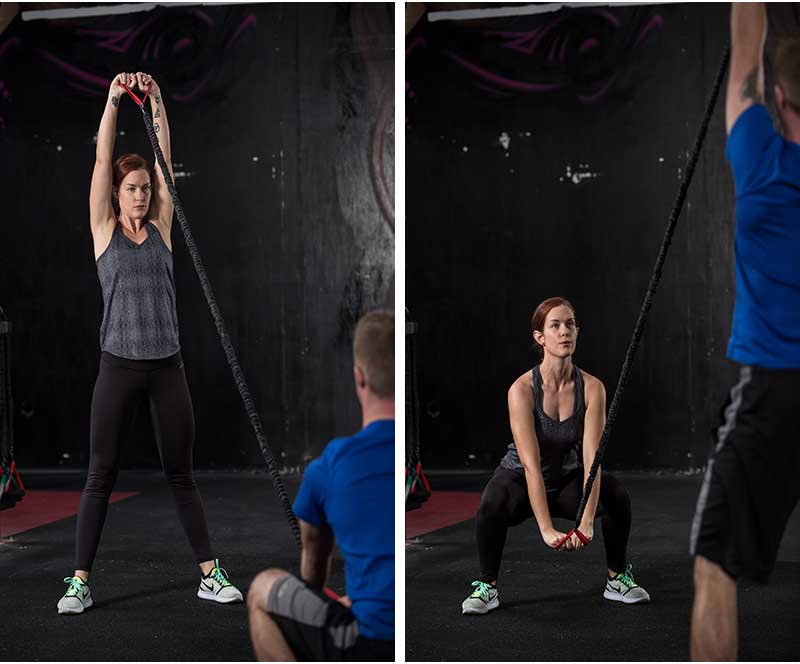
This exercise is best performed with braided tubing, with each partner holding one end of the band. Keep the band taught as each partner alternately squats. Bring the arms overhead on the up phase of the squat and bring the hands between the legs during the down phase of the squat.
Medicine Ball Slams and Burpees
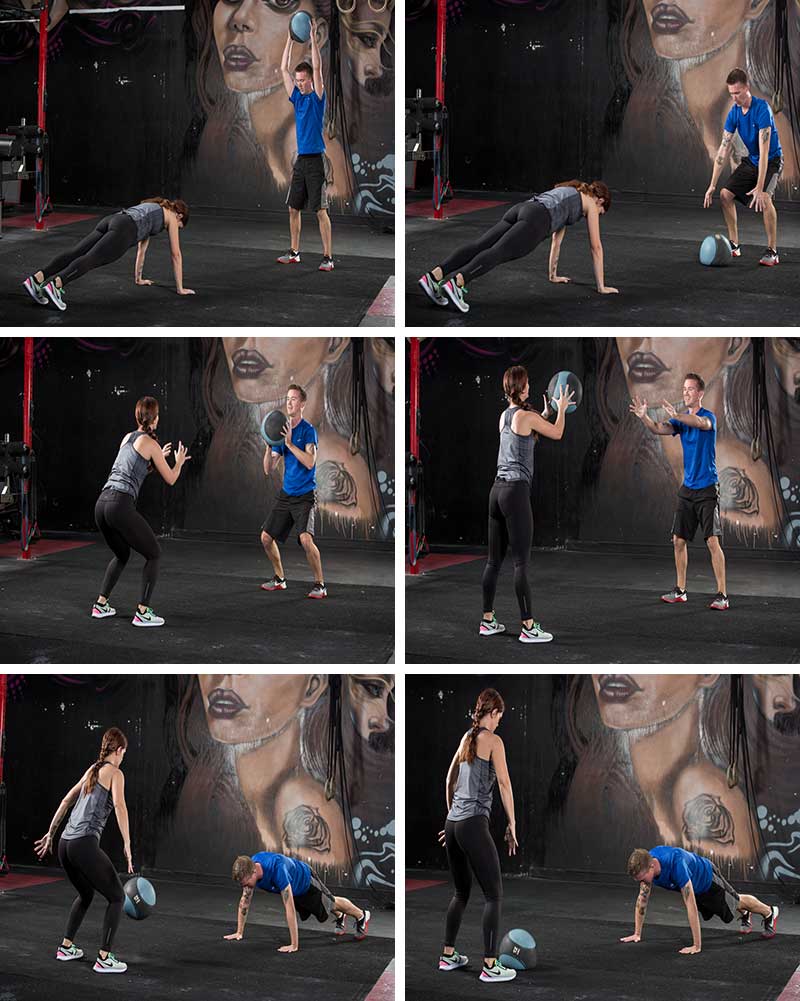
For this exercise, you'll need a medicine ball that can bounce off the floor. Both partners move simultaneously. Cue one partner to perform a medicine ball slam as the other partner performs a burpee. Once complete, the partner passes the medicine ball to the other partner so he or she can perform the medicine ball slam while the other performs a burpee. Continue alternating the exercises between the partners.
Battle Rope Partner Anchor Waves
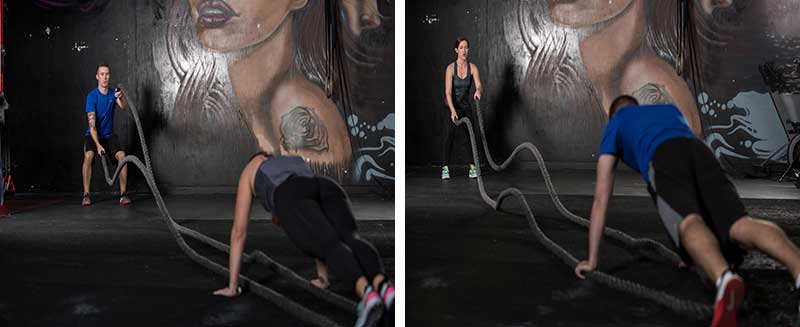
Extend the battle ropes across the floor, with a loop at one end and the handles together at the other. One person will anchor the end of the battle rope with his or her arms while performing a plank. The other partner will hold the handles and perform waves. Switch positions and repeat.
Plank Tire Runs
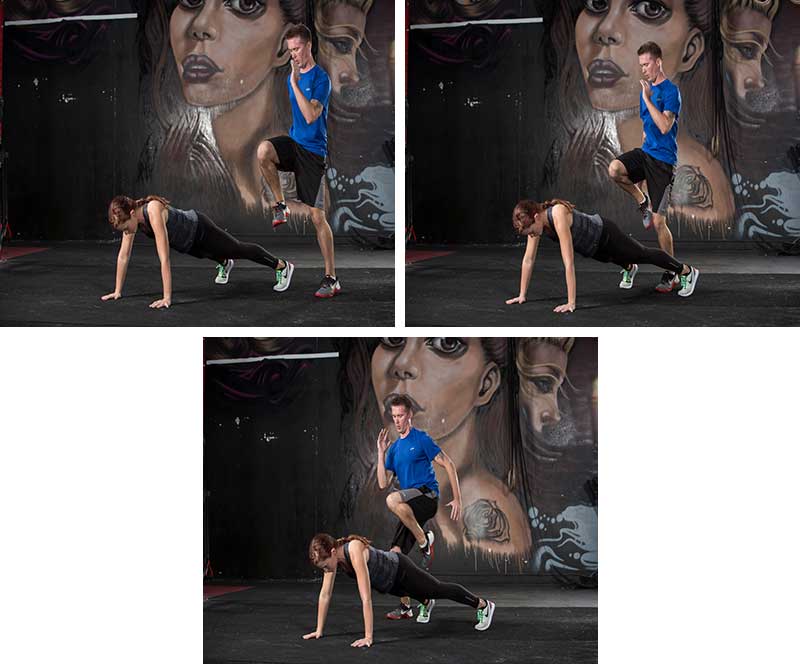
Position one partner into a plank with the feet shoulder-distance apart. The other person will jog laterally, over and in-between the other partner’s legs, similar to a tire run. The person jogging should continue going back and forth without stopping. Switch positions and repeat.
Stability Ball Squat Walk
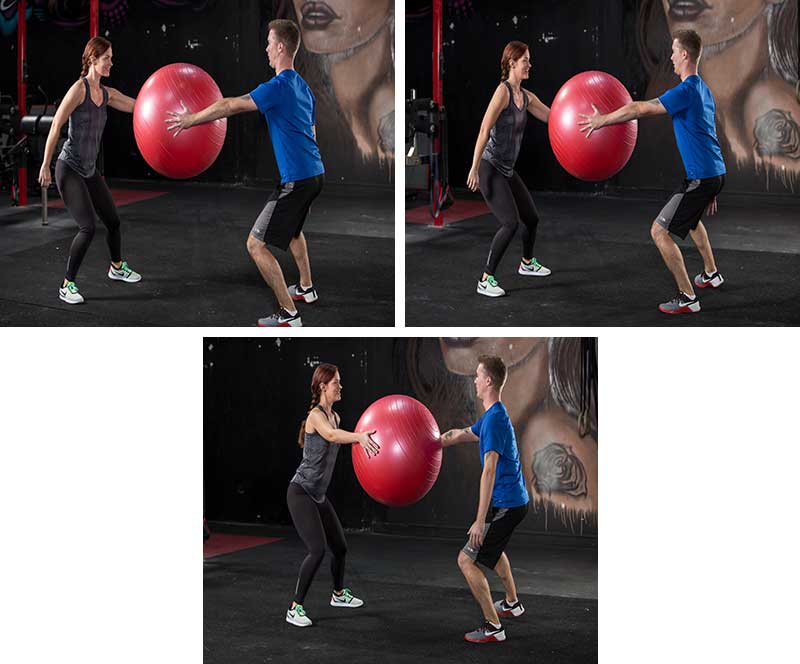
Position the partners to face each other. Have each person place his or her right hand onto the stability ball and hold the ball at shoulder height. This requires contracting the core and stabilizing the arm. Bend the knees and lower into a squat position. Instruct both partners to squat walk laterally in one direction. Switch to holding the ball in the left hand and squat-walk laterally in the other direction.
Side Shuffle With Medicine Ball Toss
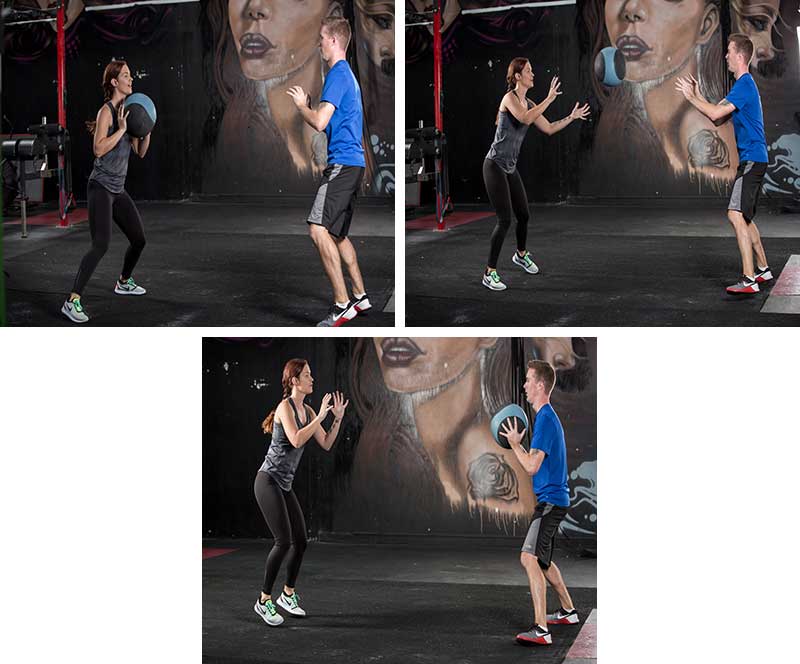
While standing 4 to 5 feet apart and facing each other, partners shuffle laterally while tossing a medicine ball back and forth to each other at chest height.
 by
by 


